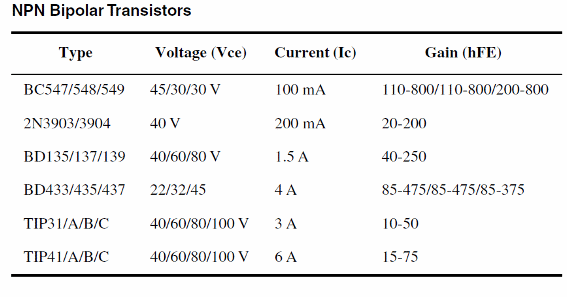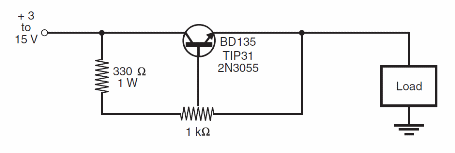Common carbon potentiometers can be used to control heavy-duty loads up to several amperes, depending on the load.
The transistor must be mounted on heat sinks. The table of transistors bellow can be used as reference to choose the proper transistor.
For motors up to 1A. we recommend the BD135 or TIP31.
For large motors, the 2N3055 can be used.
The resistor value can be altered to give total power when the potentiometer is completely open.
But it is not recommended that you reduce the value of this resistor to below 220 Ω. This resistor must have a dissipation at least of 1 W if the 2N3055 is used and the power supply voltage is 12 V or more.
Loads powered from voltages in the range between 3 and 18 V can be controlled with this circuit.
Remember that this is a linear control, and the torque will not be linear along the voltage range applied to the load.
If inductive loads such as dc motors are controlled. a diode must be wired in parallel to protect the transistor against voltage spikes generated when the load is powered up.
Figure 1 shows the schematics for the control.

The circuit can be mounted on a PCB as shoen by figure 2.





